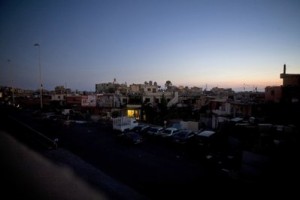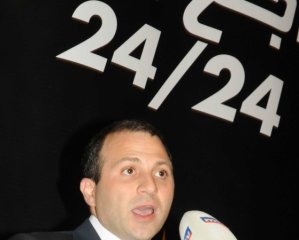 On a typical night out in Beirut, glitzy nightclubs thrum with revelers, tourists pack breezy seaside restaurants and the lights from brand-new, million-dollar skyscrapers dot the horizon.
On a typical night out in Beirut, glitzy nightclubs thrum with revelers, tourists pack breezy seaside restaurants and the lights from brand-new, million-dollar skyscrapers dot the horizon.
But beneath Lebanon’s gleaming exterior lies a creaky, third-world infrastructure that is preventing the country from fully emerging from its war-torn past. With the summer heat bearing down, some areas are facing power cuts of up to 12 hours every day for anyone without access to a generator to pick up the slack.
Strolling down some of Beirut’s most elegant streets, where posh shops sell evening gowns and $500 sunglasses, diesel generators rumble to life every day to keep the lights and air conditioning running.
Lebanon’s electricity problems date back to the 1975-90 civil war, which left the country in ruins and set back infrastructure development. The country has not built a new power station in more than a decade. Poor management and corruption have contributed to the problems since then, as has Mideast conflict. Israel bombed several power stations before its troops withdrew from Lebanon in May 2000, ending an 18-year occupation, and in its 2006 war with Hezbollah it bombed fuel tanks at the Jiyyeh power station south of Beirut. The damage was since repaired.
The problem is becoming especially pronounced as some 2 million tourists — a record that exceeds even the glamorous years before the civil war — pour into Lebanon for the summer. Business owners say the extra work is welcome, but their resources are groaning under the weight of so many customers.
“My two generators cost me about $2,000 dollars a month between diesel and maintenance,” said Samir Ballouz, owner of Mina House beach resort south of Beirut. Ballouz added that even if he has few clients, he has to keep the generator on, reducing his profit.
“Electricity is very bad and we are paying money every hour,” said Ballouz, who also pays about $1,000 a month for state electricity. “There is no person in Lebanon who is not suffering because of electricity.”
But while tourists rarely see the country’s rusty underbelly, many Lebanese rely on expensive, privately-owned generators in their neighborhoods. That means they, like Ballouz, pay two electricity bills: one for the generator and another for the state-owned Electricite du Liban, EDL.
EDL is considered to be one of the biggest drains on the state budget, costing between $1.2 billion and $1.5 billion a year, or 4 percent of the GDP, depending on international oil prices. EDL tariffs have not gone up since 1996, although many people say they would happily pay more if they could get 24-hour power.
Nabil Barakat, a 60-year-old who runs a photo studio, says he pays about $230 a month for a generator and $300 to EDL.
When asked if he believes the government will soon provide full-time power, he burst into laughter.
“If you come after 50 years from now and ask my grandchildren the question they will tell you there are electricity cuts in Lebanon,” Barakat said.
 The government acknowledges the problem. The minister of Power and Hydraulic Resources, Jibran Bassil, says demand at peak time is about 2,500 megawatts, but EDL’s maximum capacity is 1,500 megawatts.
The government acknowledges the problem. The minister of Power and Hydraulic Resources, Jibran Bassil, says demand at peak time is about 2,500 megawatts, but EDL’s maximum capacity is 1,500 megawatts.
On June 21, the Cabinet unanimously approved a plan to produce 5,000 megawatts a year in 2015 with the aim of providing 24-hour electricity through building new plants and encouraging solar and wind energy. Bassil said the plan would cost about $4.8 billion, including $1.5 billion from the government, $2.3 billion from the private sector and $1 billion from donors over the next four years.
But many say no more money should be spent on EDL, and instead funds should go toward fighting corruption, improving collection of bills and giving the private sector a bigger role.
The frequency of power cuts differ across the country. Beirut has the best deal, getting 21 hours of electricity a day. In the southern port-city of Sidon, there are 12-hour cuts.
“The cost of doing business in Lebanon is enormous from state of electricity sector and the image of the country is negatively affected by this problem,” said Nassib Ghobril, head of economic research and analysis at Byblos Bank Group. “It is unacceptable that an economy that is based on the free market, that is integrated into the region and within the global economy continues to have this kind of poor electricity sector.”
A June 2009 World Bank report said no new power generation capacity has been added since two combined cycle plants were installed in the 1990s. The rest date back to the 1970s and 1980s.
The report adds that one-third of all electricity generated in Lebanon comes from private generators while 58 percent of households use some form of self generation, such as generators and large batteries.
By: BASSEM MROUE – AP
Leave a Reply
You must be logged in to post a comment.